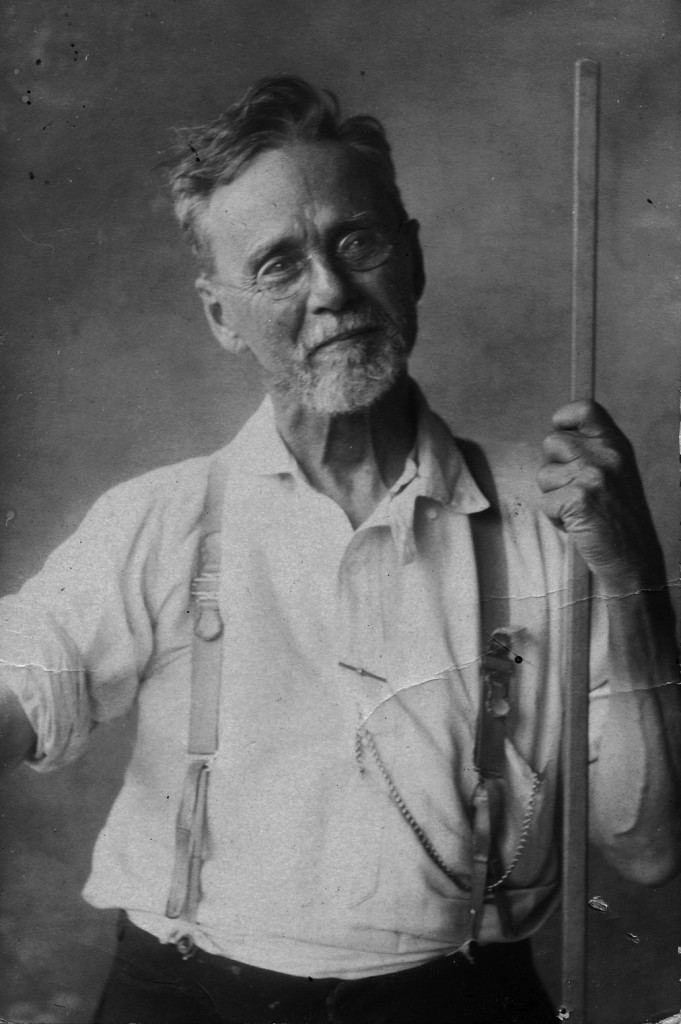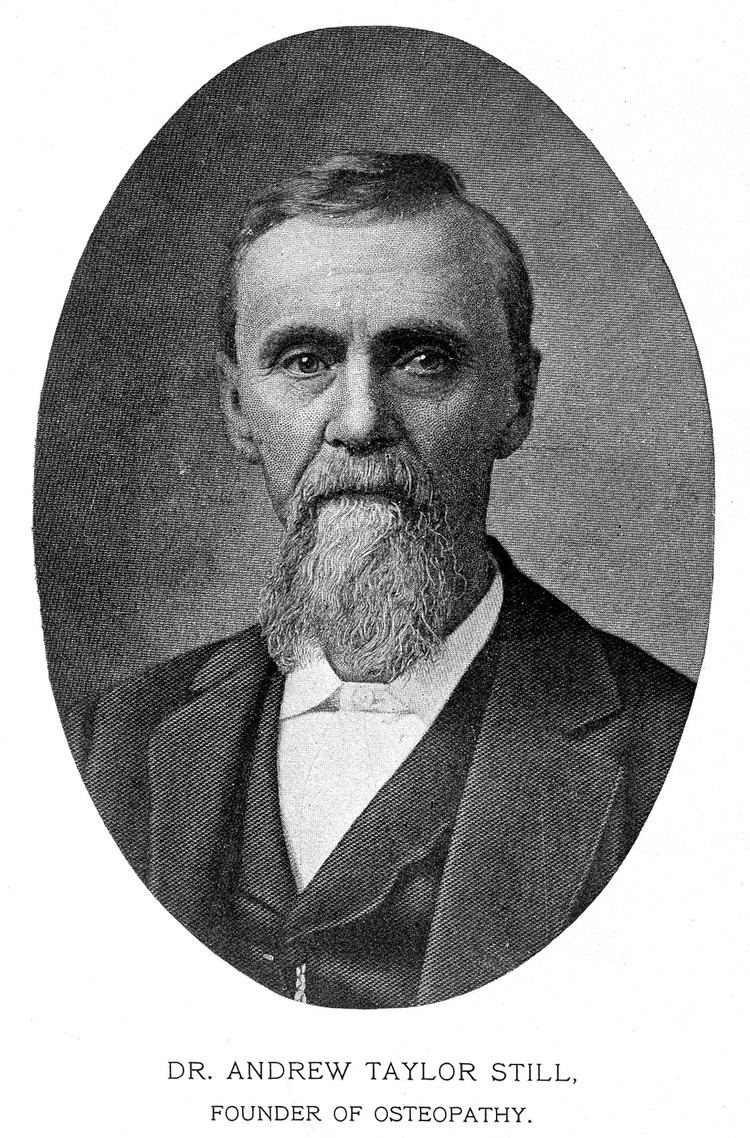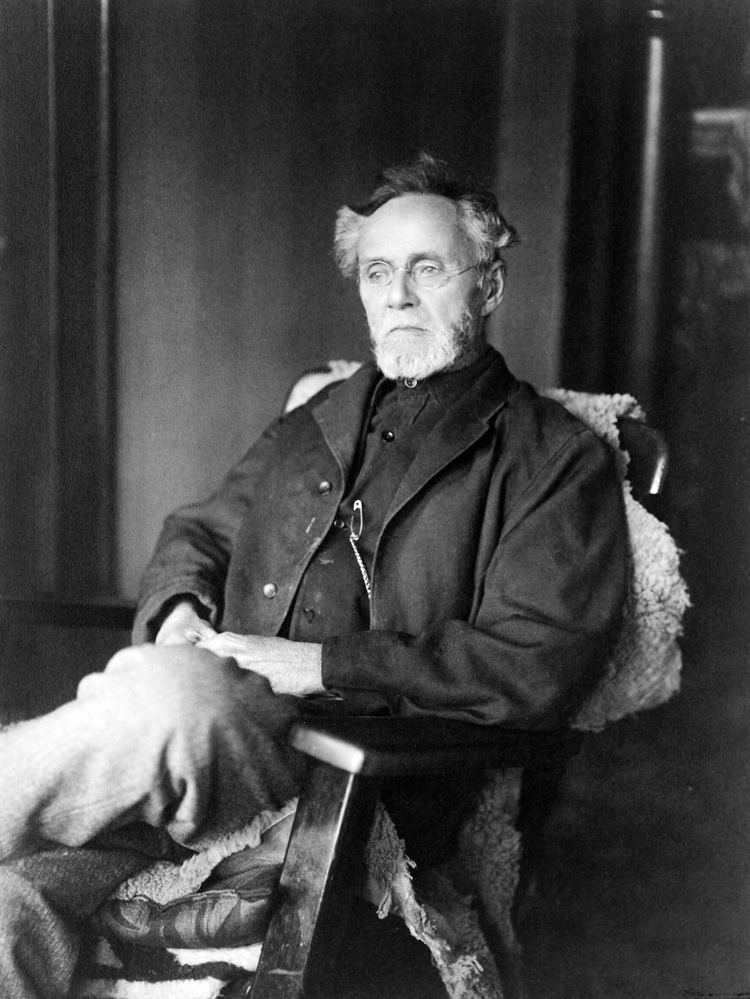Citizenship United States Nationality American | Name Andrew Still Role Physician | |
 | ||
Born August 6, 1828Lee County, Virginia, United States ( 1828-08-06 ) Institutions Baker UniversityA.T. Still University Books Philosophy of Osteopathy, Autobiography Of Andrew T Still, Osteopathy - Research and Pract, The philosophy and mech, Doctor a T Still in the Living: Hi | ||
Honoring a legend andrew taylor still m d d o
Andrew Taylor Still, MD, DO (August 6, 1828 – December 12, 1917) was the founder of osteopathy and osteopathic medicine. He was also a physician and surgeon, author, inventor and Kansas territorial and state legislator. He was one of the founders of Baker University, the oldest four-year college in the state of Kansas, and was the founder of the American School of Osteopathy (now A.T. Still University), the world's first osteopathic medical school, in Kirksville, Missouri.
Contents
- Honoring a legend andrew taylor still m d d o
- Osteopathie andrew taylor still myosteopathe com
- Early life and interests
- Kansas territorial and state legislator
- Inventor and patents
- Baker University
- Osteopathy
- Publications
- Honors
- References

Osteopathie andrew taylor still myosteopathe com
Early life and interests

Still was the son of a Methodist minister and physician. At an early age, Still decided to follow in his father's footsteps as a physician. After studying medicine and serving an apprenticeship under his father, he entered the Civil War as a hospital steward, but later stated in his autobiography that he served as a "defacto surgeon".

At the time, the hospital stewards of the Army had many responsibilities, including maintaining hospital stores, furniture, and supplies for the sick. Since pharmacists were not provided for the hospitals, the hospital stewards also filled prescriptions, and when the medical officers were not present, they took care of the patients. Hospital Stewards were sometimes rewarded with promotions to surgeon or assistant surgeon.

After the Civil War and following the death of his wife, three of his children, and an adopted child from spinal meningitis in 1864, Still concluded that the orthodox medical practices of his day were frequently ineffective and sometimes harmful. He devoted the next thirty years of his life to studying the human body and finding alternative ways to treat disease. During this period, he completed a short course in medicine at the new College of Physicians and Surgeons in Kansas City, Missouri, in 1870.
Still adopted the ideas of spiritualism sometime around 1867, and it "held a prominent and lasting place in his thinking."
Kansas territorial and state legislator
Still was active in the abolition movement and a friend and ally of the infamous anti-slavery leaders John Brown and James H. Lane. He became deeply embroiled in the fight over whether Kansas would be admitted to the Union as a slave state or a free state. The Kansas–Nebraska Act of 1854 provided that the settlers in those two territories would decide the question for themselves. Civil war raged in Kansas as both sides tried to gain control of the territorial government. In October 1857, Still was elected to represent Douglas and Johnson counties in the Kansas territorial legislature. Still and his brothers took up arms in the cause and participated in the Bleeding Kansas battles (between the pro and anti-slavery citizens). By August 1858, a free-state constitution had been passed; Kansas was admitted to the Union as a free state on January 29, 1861.
Inventor and patents
Still was fascinated by machines, and whenever faced with a mechanical problem, his answer was always to devise a better approach. In the 1870s, he patented an improved butter churn. He made improvements to a mowing machine designed to harvest wheat and hay, but before a patent could be submitted, his idea was stolen by a visiting sales representative from the Wood Mowing Machine Co. In 1910, he patented a smokeless furnace burner but had "some difficulty producing a full-sized working model. Heartbroken after his wife, Mary Elvira's, death in May 1910, he did not have the will to pursue the matter further, and the invention was never successfully marketed."
Baker University
Still and his family were among the founders of Baker University, the first four-year university in the state of Kansas. Still was involved in selecting the location for the site of Baker University's first building. Along with his brother, Still donated 640 acres of land for the university campus. While maintaining his medical practice, where he treated patients afflicted with small-pox and cholera, Still spent five years building the facilities at Baldwin City. During that time, Still also served as a representative of Douglas County in the Kansas Legislature, and participated in the abolition of slavery from the state.
Osteopathy
Still believed that osteopathy was a necessary discovery, because the current medical practices of his day often caused significant harm and conventional medicine had failed to shed light on the etiology and effective treatment of disease. At the time Still practiced as a physician – medications, surgery and other traditional therapeutic regimens often caused more harm than good. Some of the medicines commonly given to patients during this time were arsenic, castor oil, whiskey and opium. Additionally, unsanitary surgical practices often resulted in more deaths than cures.
Dr. Still sought to reform existing 19th-century medical practices. Still investigated alternative treatments, such as hydropathy, diet, bonesetting, and magnetic healing. Still found appeal in the relatively tame side effects of those modalities, and imagined that someday "rational medical therapy" would consist of manipulation of the musculoskeletal system, surgery and very sparing use of drugs, including anesthetics, antiseptics and antidotes. He invented the name osteopathy by blending two Greek roots osteon- for bone and -pathos for suffering in order to communicate his theory that disease and physiologic dysfunction were etiologically grounded in a disordered musculoskeletal system. Thus, by diagnosing and treating the musculoskeletal system, he believed that physicians could treat a variety of diseases and spare patients the negative side-effects of drugs.
Still founded the first school of osteopathy based on this new approach to medicine - the school was called the American School of Osteopathy (now A.T. Still University) in Kirksville, Missouri in 1892.
Still was also one of the first physicians to promote the idea of preventive medicine and the philosophy that physicians should focus on treating the disease rather than just the symptoms.
Still defined osteopathy as:
In a 1907 interview by the Topeka Daily Capital newspaper, A.T. Still's son, Charles Still, D.O., described his father's philosophy that the body would operate smoothly into old age, if properly maintained and that every living organism possessed the ability to produce all the necessary chemicals and materials to cure itself of ailments.
Publications
Still published four books during his life. His first book, published in 1897, was entitled Autobiography of Andrew Taylor Still with a History of the Discovery and Development of the Science of Osteopathy. A revised edition of the book was re-published in 1908 after a fire damaged the original printing plates. In 1899, Still published his second book, Philosophy of Osteopathy.
In 1902, Still published his third book, The Philosophy and Mechanical Principles of Osteopathy, although some dispute remains over the date. Still published his fourth and final book in 1910, entitled Osteopathy Research and Practice.
Honors
In December, 2013 Still was announced as an inductee to the Hall of Famous Missourians. His bronze bust will be one of forty-four on permanent display in the Missouri State Capitol in Jefferson City. For the first time in the hall's history, the public was allowed to vote on new inductees. Still received over 38 percent of the votes, far outdistancing all others in consideration.
